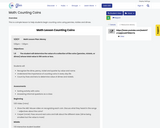
This is a simple lesson to help students begin counting coins using pennies, nickles and dimes.
- Subject:
- Mathematics
- Material Type:
- Lesson
- Author:
- Tara Pittman
- Date Added:
- 08/06/2020

This is a simple lesson to help students begin counting coins using pennies, nickles and dimes.

In this enrichment lesson, students will use technology to demonstrate their understanding of intradisciplinary and interdisciplinary concepts by creating a math video on how they use mathematics in their daily lives. Throughout the activity, they will be able to apply, analyze, synthesize, and evaluate information gathered from observation or through experiments as they work with their peers in a collaborative setting.

Students will complete math problems on the Mathematical Color Picking handout to create corls by using the answers as values for Red, Green, and Blue,The handout also integrates number sense concepts that use the RGB values.

Students will be able to explore matter, by getting hands-on experience experimenting with salt, sugar, sand, color changing beads, and hot and cold water.! Using the materials, the students will be able to use various materials to practice how objects interact with water.. Dive into matters and allow your students access to expand their knowledge using information that is transmitted using computing devices, because the students will record themselves discussing their results from their experiment to share with their classmates.

1. Matter and Pointillism Lesson2. Painted example3. TEI Matter

The first of three lessons on Pre-Columbian era with a focus how the Mesoamerica physical environment influenced human activities. Students apply the concept of relative location as they interpret and analyze a series of maps about the physical environment including topography, climate, and vegetation. Students identify possible challenges Pre-Columbian civilizations faced and make predictions about the civilization’s social, political and economic response to the environment. Key questions: What are the physical characteristics of Mesoamerica?; How did the physical environment influence the development of Mesoamerican civilizations?; How did the Aztecs and Maya overcome the limitations of their physical environment?

The second of three lessons on Pre-Columbian era with a focus how the South American physical environment influenced human activities. Students apply the concept of relative location as they interpret and analyze a series of maps about the physical environment including topography, climate, and vegetation. Students identify possible challenges Pre-Columbian civilizations faced and make predictions about the civilization’s social, political and economic response to the environment. Key questions: What characteristics distinguished the physical environment of the Incan civilization?; How does location influence the development of a civilization?; How did the Incas overcome the limitations of their physical environment?

The third of three lessons on Pre-Columbia era with a focus on cultural landscapes. These reflect ideas and beliefs of a place’s inhabitants and include shelter, religious and government buildings, monuments, and more. Students develop and refine the skill of interpreting images to support hypotheses and uncover similarities and differences among the civilizations of the Americas. Key questions: How have different cultures shaped their cultural landscapes?; How does the cultural landscape provide evidence of human interaction with the environment?

During the last sunspot cycle between 1996-2008, over 21,000 flares and 13,000 clouds of plasma exploded from the Sun's magnetically active surface. Students will learn more about space weather through reading a NASA press release and viewing a NASA eClips video segment. Then students will explore the statistics of various types of space weather storms by determining the mean, median and mode of different samples of storm events. This activity is part of the Space Math multimedia modules that integrate NASA press releases, NASA archival video, and mathematics problems targeted at specific math standards commonly encountered in middle school textbooks. The modules cover specific math topics at multiple levels of difficulty with real-world data and use the 5E instructional sequence.
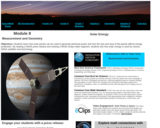
This is a set of three, one-page problems about the size and area of solar panels used to generate power. Learners will calculate area fractions to compare the sizes and distances of Jupiter's moons. Options are presented so that students may learn about the Juno mission through a NASA press release or about how solar energy is used by various NASA satellites and technology by viewing a NASA eClips video [3 min.]. This activity is part of the Space Math multi-media modules that integrate NASA press releases, NASA archival video, and mathematics problems targeted at specific math standards commonly encountered in middle school.
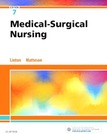
For practical nursing studentsMedical Surgical Nursing - Chapter 63 - First Aid, Emergency Care, & Disaster Management

Students will look at an overview of the rise of mass news media in the U.S.. They will then study the Civil Rights movement through the lens of media coverage to determine the impact news coverage of violence against peaceful protestors helped lead to social change.

Students are asked to use the provided source material to answer the central historical question: Why did African Americans join the Union Army during the Civil War?

List of countries with their annual methane emissions. The data are from 2005. The data are given in total annual emissions, thus must be compared with economic activity, geographic and most importantly, population data to be relevant.

The Metropolitan Policy Program offers a number of features that allow users to interactively display and map data related to the program's signature research projects on the nation's largest metropolitan areas
The following lessons and videos are designed to help you teach essential digital citizenship concepts of copyright and creativity, and to get students thinking and talking about how these concepts relate to their own online activities as both consumers and creators of creative work. The lessons have been scripted in detail to help presenters feel confident as they communicate copyright concepts, including fair use and other copyright limits.
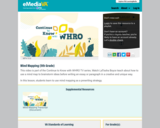
This video is part of the Continue to Know with WHRO TV series. Watch LaTissha Boyce teach about how to use a mind map to brainstorm ideas before writing an essay or paragraph in a creative and unique way.

Minimize Pollution in the Environment is a lesson designed by a Health and Physical Eucation Teacher to support Health instruction. Created By: Libby Acampora Powhatan County Public Schools
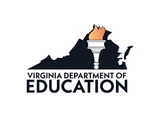
Science Instructional Plans (SIPs) help teachers align instruction with the Science Standards of Learning (SOL) by providing examples of how the content and the scientific and engineering practices found in the SOL and curriculum framework can be presented to students in the classroom.

This video is part of the Continue to Know with WHRO TV series. Watch Jessica Scott teach how to compare rational numbers, placing them in ascending or descending order.